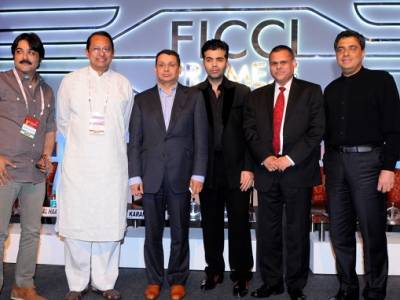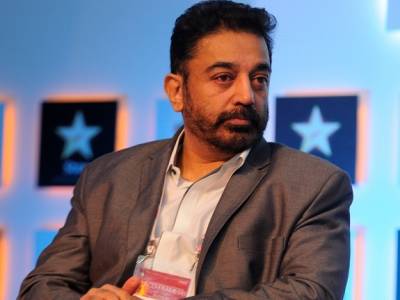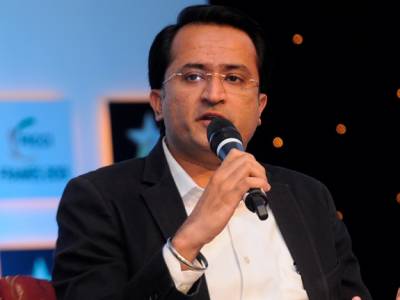FICCI FRAMES 2013: Regulation seems to be the major challenge for the industry
FICCI Frames 2013 has started with an uproar. If the inaugural session of the Frames saw a packed house, with people in the industry rapt in attention to hear out the key addresses, post-lunch the audience turned out in large number to hear the panel talking about Engaging a Billion Consumers in the Media & Entertainment Industry. The eminent speakers on this panel were Ravi Dhariwal, CEO, Publishing, Bennett & Coleman, Punit Goenka, MD & CEO, ZEEL, Siddharth Roy Kapur, MD, Studios, Disney UTV, Sudhanshu Vats, Group CEO, Viacom 18 Media, Rahul Johri, Senior VP & GM, India- Discovery Networks Asia-Pacific, Shailesh Rao, Head of Global Operations, Twitter Inc. and the discussion was moderated by Uday Shankar, CEO, Star India Pvt. Ltd. & Chairman, FICCI Entertainment Committee.
Uday Shankar began the discussion with the question, what is the most important problem that needs to be addressed in order to engage a billion consumers in the media and entertainment industry and the expert comments soon followed. Rahul Johri citing his own example said that he hires good creative talent who excels in what they do and then gives them all the freedom to create content. This process ensures that the best reaches the small audience that they have as their target. India is a diverse country and therefore the content creators have to reach out to a diversified audience, does the industry have the ability to cater to this demand? Santosh Vats opined that on moving forward the industry will have to learn to build the ability to segregate the market and target the specific audience accordingly. India is seeing a mega consumer trend and as the country becomes more progressed there will be a shift from the collective and the family as whole consumers and what will be replaced in its place will be the “I”. The self shall become more important as the consuming trend will become more individual based rather than collective based.
Speaking more on this Punit Goenka shared the view that we have just taken a baby step at the moment. This is a long journey ahead and we need to gear up ourselves for the challenges that lay ahead. We need to understand our role and call ourselves as content creators and content aggregators rather than as broadcasters.
Taking the discussion forward Uday acclaimed Siddharth Roy Kapur for creating films that run not only on star power but also films that have concepts emerging as a star in its own right. With experience in creating such successful films Uday wanted to know how achievable the target of creating a 1000 crore blockbuster was in a country where infrastructure was the most difficult problem. Siddharth said that there was a massive gap in infrastructure in India, and the lack of cinema halls for exhibition of films is a problem that needs to be cracked. Moreover piracy is a problem that plagues the Indian film industry as every new movie is available on the web on the Friday evening of its release. However this problem can be checked with making the films available on the web through legitimate means, thus syndication between the content available and the platform on which it is exhibited is required. New media which is not a new medium anymore can be tapped for film exhibition, however industry abroad as well as in India are not willing to bring about this method since it brings down the business. Small screen has already been utilized by the film industry to premiere new movies within months of it release, and markets of the digital medium too need to be tapped in the future but making this a legitimate business is a massive challenge ahead.
Rahul Johri spoke about where the switch spot lay and he was of the opinion that there are 800 plus channels available to the audience, some of them our global brands. He believes that in the process of fragmentation, brands with strong image will survive in the long run.
Uday asked Shailesh to enlighten them on the prospects of the technology of the digital medium and is the traditional medium of media unaffected by the new onset of technology. Shailesh of Twiitter Inc. began with the compliment that the content that the Indian entertainment industry creates is finest in Asia by so far. He said that the way to connect aspiration was through technology for technology will have a positive effect on the traditional medium of print and television. It will help them to push the medium more effectively and also allow them the opportunity to interact with the audience and know what their demands are; this takes away the pressure off the executive. Technology can be utilized for effective mode of distribution as well as exhibition of content. The growth of internet users in India is tremendous. No films have been yet exhibited on the digital platform but this a market to explore. Intelligence and creativity is there, what needs to be done is, work out partnerships and create economic wealth out of it.
What is the proposition to exploit the technology available? Speaking on this Ravi Dhariwal said that Radio is a poor example of how the diversity of the country and content is throttled by the govt. In order to earn profits, brands and niches need to be created, however regulation at the end of the day mars it whether it is TV or content for films. There is a tremendous opportunity available in the country, this need to be harnessed in the right manner and success is largely possible because of the great amalgamation of great marketing people with great creative people. Experimentation will lead to a little bit of mistakes but this will help in creating successful business models. The laws of the country are definitely an impediment to the big leap possible. It is need to be understood that media is a consumer based industry and the power of choosing rests with the consumer as to what he wants to pay and watch. There are one billion consumers available to the industry, a successful robust business model can be created which will not only be profitable but also sustainable.
Puneet Goenka said that if the regulations remained they would not be able to run businesses successfully as it is in terms of the pricing of cricket channel which has been fixed by the govt, while they pay millions to acquire the rights to telecast a series the share of the viewers’ payment on these channels have hardly been increased beyond 2% over the years.
Technology, Creativity and Regulation were the three challenges put forward by Uday Shankar, but what according to the panelists was the biggest challenges of all the three and the majority were in favour of regulation which needs to be changed and this can only be brought about by the coming together of the industry and making a collective effort to see through the change. However, Shailesh and Siddharth differed on this aspect with Shailesh considering technology as a challenge while Siddharth wanted a choice to say infrastructure but the lack of it made him vote in the favour of creativity.
With this the discussion came to an end but not without Uday Shankar opening the house to the audience for questions. Well we had lots of questions but time permitted only a few until the emcee came and gave the cue to Shankar that we had overstepped the mark. This called an end of an interesting session making us ask for an extra time to have our queries answered. I By Rabab Rupawala [rabab(at)adgully.com]











Share
Facebook
YouTube
Tweet
Twitter
LinkedIn